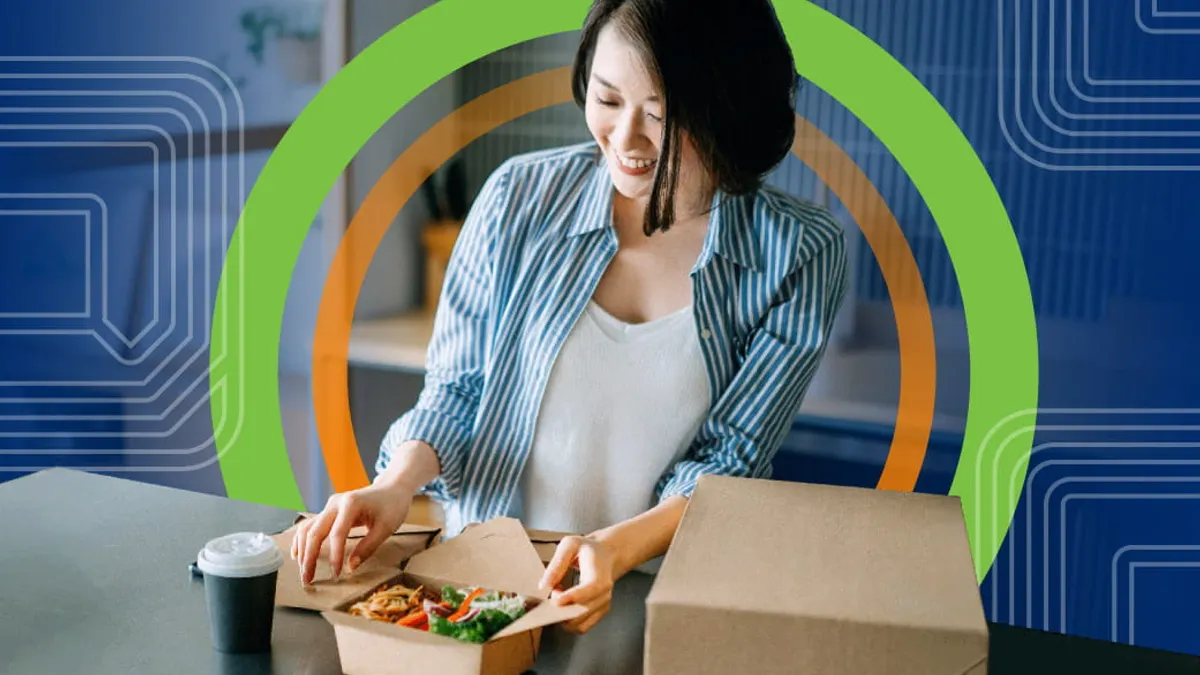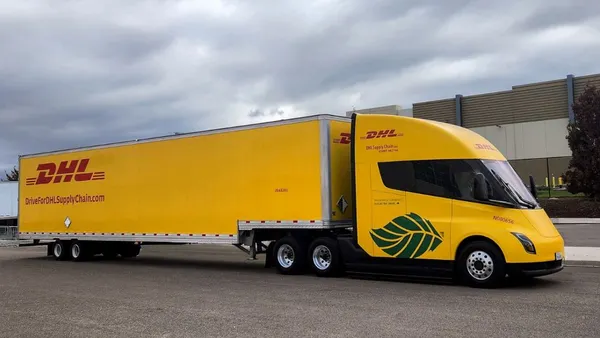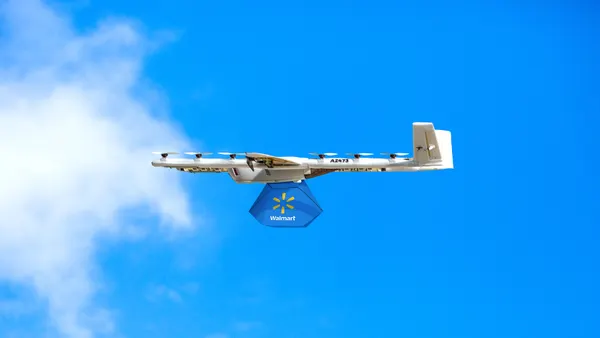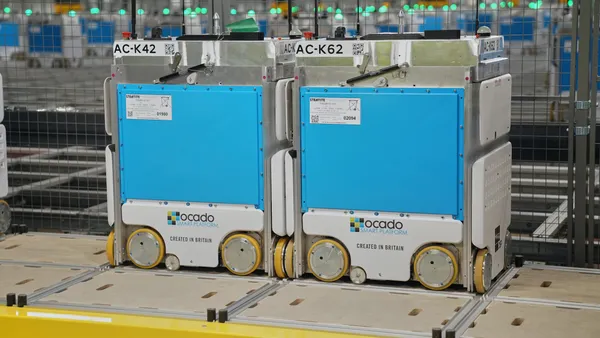Food delivery apps such as Grub Hub and Instacart may have grown significantly during the pandemic, but the trend toward delivery is a longer-term development in the food service and grocery industries. The same is true for automation — as robots become more common, they’re increasingly used for food deliveries. From New Jersey, to Texas, to California, food delivery via autonomous robots is becoming ubiquitous.
How can these innovations ensure food safety and higher food quality for consumers? Partners GS1 US and The Ohio State University set out to answer this question with a traceability pilot project measuring the food temperatures of Grub Hub deliveries on the Ohio State campus. Using Radio Frequency Identification (RFID) tags specially designed with temperature sensors, this pilot leveraged Global Trade Item Numbers (GTINs) and Global Individual Asset Identifiers (GIAIs) from GS1, the leading not-for-profit standards organization, to track temperature changes from restaurant to residence hall.
The findings show how sensors and traceability can support the expansion of autonomous delivery both in food and grocery, and even for cold chain and pharmaceutical products. Here are the key learnings:
Goals of the pilot project
Autonomous food deliveries started about three years ago on The Ohio State University campus in Columbus. The university had partnered on a project to track reusable cup usage and waste reduction efforts with RFID tags, and discussions between them and GS1 inspired the establishment of a pilot to improve visibility into food safety and quality for on-campus deliveries.
Thanks to their existing partnership, it made sense to utilize RFID technology in tandem with GS1 traceability solutions. “Our goal was two-fold,” said Jordan White, Innovation Manager at GS1 US. “Food service providers and food delivery apps can better understand the safety and quality of the food they’re transporting. Universities and similar institutions obtain visibility into the services provided to their residents.”
To meet these goals, the partners sought to track food temperature from restaurant to delivery locations and create a repeatable, evidence-based framework for the autonomous delivery of any temperature-sensitive items.
Capturing and sharing data for visibility
The pilot project used chicken fingers and French fries from the campus restaurant Mirror Lake Eatery as its test subjects. Completed orders were fitted with a temperature-sensing RFID tag to track food temperature. They were also assigned a GTIN so that each order could be uniquely identified. Food was placed in the autonomous rovers, which were also equipped with a GIAI to provide further visibility into the physical assets transporting the food.
Once a food order was placed in a rover, transportation data was captured through a handheld device scan and recorded as Electronic Product Code Information Services (EPCIS) event data. The rovers then traveled to one of three residence halls, each chosen for its proximity to the restaurant. “We essentially used a close, medium-range and far location to compare results,” White explained.
Upon arrival, the team measured the food temperature with the handheld device and used an RFID reader to note the ambient temperature inside the cavity of the rover carrying the food. Using this comprehensive data set, which tracks parameters from the restaurant kitchen to the delivery site — including distance traveled and conditions inside the individual rovers — the team could construct an in-depth picture of each specific delivery.
Key takeaways from the pilot project
The team found that distance traveled and conditions during transit played critical roles in food temperature. “We saw significant fluctuations based on time to transport the food and the outdoor temperature,” said Zia Ahmed, Associate Vice President for the Residential Experience at The Ohio State University. White also noted, “In some instances, the food temperature dropped by 25 to 30 degrees in the span of a half hour.”
Crucially, no orders arrived at an unsafe temperature. But certain ones arrived lower quality because they weren’t warm. These findings show that for a better customer experience, delivery rovers or vehicles could be equipped with a heating or cooling compartment. For deliveries in cold climates, such as Ohio State’s campus in winter, a heating mechanism in the rover could make a significant difference. In contrast, foods like sushi and seafood would benefit from a chilled compartment during summer deliveries (or at any time of year in warm climates).
Next steps for better deliveries
The Ohio State University and GS1 plan to build on this pilot with increasingly granular data. This work illustrates how GS1 Standards drive end-to-end transparency in the journey of food items, from raw chicken to a cooked, finished meal. By enabling precise temperature monitoring, location tracking and the unique identification of food products, locations and autonomous delivery units, this initiative plays a crucial role in maintaining food quality throughout storage, preparation and delivery.
This visibility could be extended even to the point of harvest. “Imagine if you could measure temperature, moisture level and other predictors of food quality in the field or on the farm,” Ahmed said. “This could provide critical insights on safety and quality for better consumer experiences.”
“Safety is imperative, but as food deliveries grow exponentially, quality is also increasingly important,” White said. Whether it’s prepared meals, groceries, or cold chain items such as pharmaceuticals, monitoring temperatures and ensuring all stakeholders can access up-to-date information will facilitate more autonomous deliveries of vital perishable goods.
Learn more about the RFID experience, including traceability, product visibility and more at GS1 Connect, the premier supply chain innovation conference of the year.










